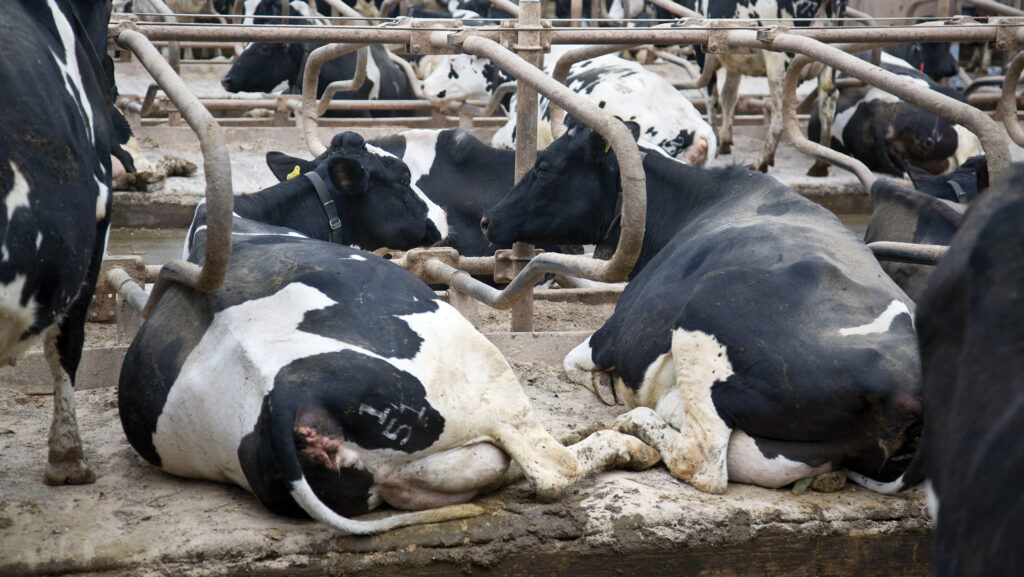Advice on applying lime to dairy cubicles to aid mastitis control
 © Tim Scrivener
© Tim Scrivener Liming cubicles may not be anyone’s favourite job, but it remains an important task in mastitis control.
Push/pull-along dispensers, auger-driven models (spreading lime with bedding sawdust), or the traditional bucket-and-mug (with a practised flick of the wrist) should all apply an even – not lumpy – layer of lime to cover the back of the cubicle bed.
See also: 5 ways to fine-tune cubicle housing for udder health
Whether a modern dairy herd still needs to apply lime is very farm specific, according to the Dairy Group’s parlour specialist, Ian Ohnstad.
“If you run low levels of mastitis, have good control of Bactoscans and cell counts, then you probably won’t get a benefit from starting to apply lime,” he says.
How lime works
When cow housing is poorly designed – with brisket boards or cubicle divisions in the wrong position, causing cows to dung or urinate on their beds – liming will be necessary to counteract wet, dirty cubicles.
Ian suggests looking at the soiling level and amount of leaked milk on beds in the mornings to decide if liming is needed.
The point to remember is that lime is not a disinfectant: its role is to act as a desiccant.
Lime reduces the growth rate of mastitis- causing bacteria by drying out cubicle beds and raising the pH to alkaline.
This is why a poor spreading technique – too thick, too wet, or too uneven – and infrequent applications will not be as potent in cutting the bacterial loading on the bed.
As for guidelines on how much to spread and how often, Ian says there is little documented evidence of the benefits of liming.
He can only recall a student project that had sampled bacteria levels on cubicles under different liming regimes.
This showed bacteria numbers rose again within two days of a lime application – further faecal contamination and moisture had helped bacteria levels back to pre-application levels.
Application rates
This suggests, he says, that the industry’s “once-daily” recommendation is sensible to maintain pH, as well as reduce moisture levels on the beds.
Application rates, however, will depend on mug size, operator effectiveness, and how quickly a manual dispenser is pushed down the passageway: too fast and not enough lime is spread; too slow, and it leaves a thick layer, he points out.
“It’s best to apply 150g/cubicle once a day – when it fits into the farm work routine.
Although for cows on twice-daily milking, the most benefit comes from morning applications of lime [as beds will be more dirty],” he says.
Recommended routine
A simple routine is to walk down the row of beds, rake and remove soiled material, brush clean, apply lime, then add bedding material on top.
As the lime mops up moisture, the bedding prevents direct contact with the cow’s skin.
Hydrated lime can be particularly harsh, causing hock burns and really dry teats, says Ian, who adds that cost of more benign lime products is offset by their easier handling.
Features of modern cow housing such as well-ventilated cubicle sheds, or cooling fans for summer, can mean that some days it is too windy to apply lime products – they just fly off the beds.
This is where the 2002 Control of Substances Hazardous to Health regulations, covering operator safety, offer best practice.
Business owners must protect their workforce by trying to eliminate exposure to hazardous substances, then controlling exposure such as supplying full personal protective equipment.
“As a minimum, you need a face mask and eye protection,” says Ian.
